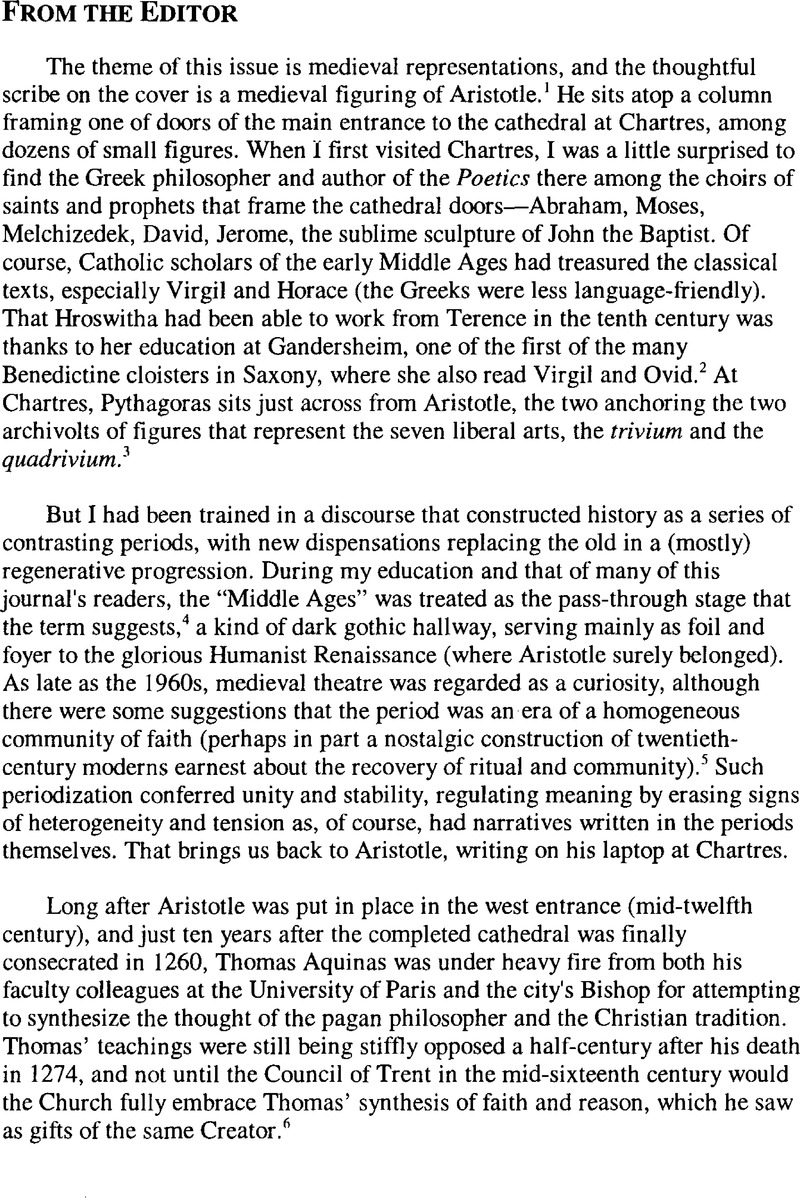No CrossRef data available.
Article contents
From the Editor
Published online by Cambridge University Press: 07 July 2009
Abstract

- Type
- From the Editor
- Information
- Copyright
- Copyright © American Society for Theatre Research 1997
References
1. Permission to reproduce the photograph of Aristotle by Houvet was generously given by Chanonine Francois Legaux, Rector of the Cathèdrale Notre Dame de Chartres.
2. Haight, Anne L., ed., Hroswitha of Gandersheim (New York: The Hroswitha Club, 1965), 12.Google Scholar
3. Miller, Malcolm, Chartres Cathedral (Chartres: Editions Houvet, 1972), 38–39.Google Scholar
4. The OED etymology suggests it is an eighteenth-century construction.
5. See, for example, the beginning of the chapter on the medieval stage in the then widely used theatre history text, Macgowan, Kenneth and Melnitz, William, The Living Stage (Englewood Cliffs, NJ, 1955)Google Scholar, entitled “Theatre Reborn before Medieval Altars.” But, the authors still write, “the theatre of the Middle Ages was strange theatre—if, indeed, you can call it a theatre at all” (54). See also Flanigan, C. Clifford, “Comparative Literature and the Study of Medieval Drama,” Yearbook of Comparative and General Literature 35 (1986): 58.Google Scholar
6. The New Catholic Encyclopedia (New York:McGraw Hill, 1967), 14:106–107.Google Scholar
7. Kobialka, Michal, “Corpus Mysticum el Representationem: Hildegard of Bingen's Scivias and Ordo Virtutum,” Theatre Survey 37:1 (05 1996): 1–22.CrossRefGoogle Scholar




